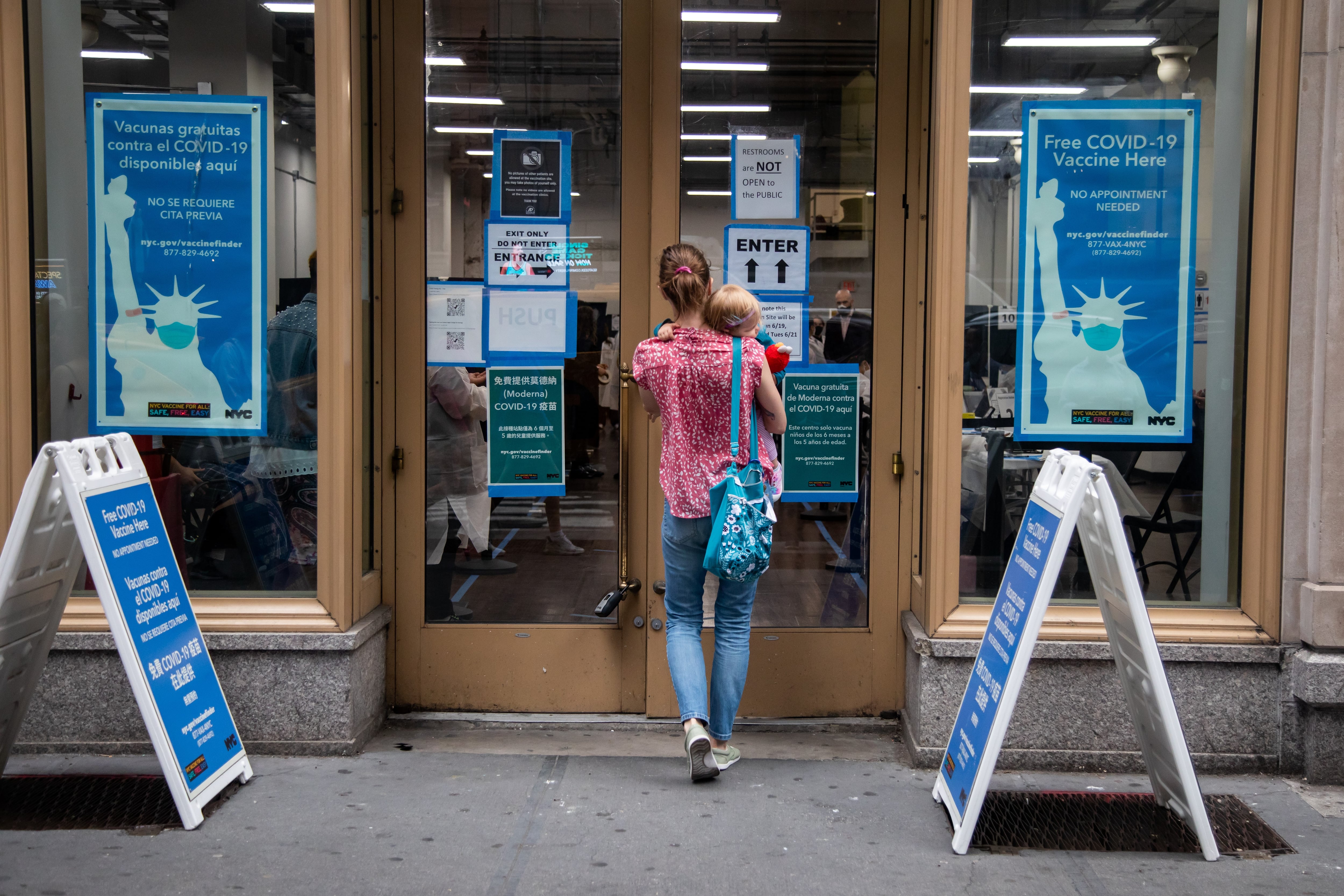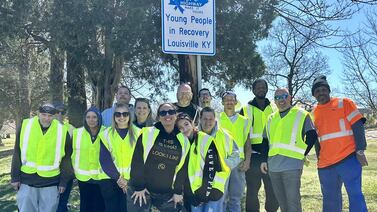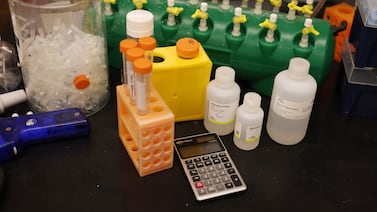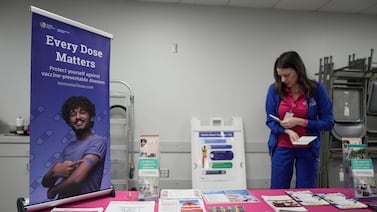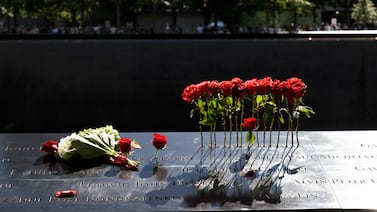Public health, explained: Sign up to receive Healthbeat’s free New York City newsletter here.
The impacts of the U.S. Department of Health and Human Services’ sweeping cuts to public health funding in New York state and New York City have started to come into focus, with wide-ranging consequences for disease surveillance and outbreak response, addiction recovery programs, and mental health services.
The state Health Department expects to lose more than $300 million, diminishing its disease surveillance and outbreak response work as it confronts emerging measles cases and the spread of bird flu. In the past week, at least 50 employees at Health Research Incorporated, a nonprofit affiliate of the department, have been terminated. Meanwhile, the Office of Addiction Services and Supports faces $40 million in cuts, while the Office of Mental Health expects to lose $27 million, and some community organizations are warning of possible layoffs and disruptions to care.
New York Attorney General Letitia James, along with 22 other states and the District of Columbia, filed a lawsuit on Tuesday against HHS and Secretary Robert F. Kennedy Jr., arguing that pulling back more than $11 billion in health funding nationwide violates federal law, endangers Americans’ public health, and leaves states “at greater risk for future pandemics and the spread of otherwise preventable disease.”
The New York City Department of Health and Mental Hygiene faces more than $100 million in cuts to its funding from the Centers for Disease Control and Prevention. As of Wednesday, the agency has not had any related layoffs, according to spokesperson Chantal Gomez. But the cuts will have a significant impact on the city’s public health work, leaders say.
In a declaration filed in support of James’ lawsuit, Dr. Michelle Morse, the acting commissioner of the city Health Department, said the termination of her agency’s grants will have “far-reaching, devastating consequences,” leaving the city “less prepared to respond to an infectious disease outbreak of any kind.”
CDC cuts have cost New York state at least 50 health jobs
The HHS cuts to the state Health Department impact a wide range of state public health services, including virus surveillance, disease outbreak response, public-facing dashboards, and the work of preventing infections in hospitals and nursing homes, according to the office of Gov. Kathy Hochul.
“It’s all freaking egregious, and I am pained by the entire thing,” state Sen. Gustavo Rivera, a Bronx Democrat and chair of the Senate Health Committee, said of the sweeping cuts.
At Health Research Incorporated, 23 employees funded through a CDC grant to address Covid-19 health disparities were terminated on Thursday, and another 27 employees funded through the CDC’s Epidemiology and Laboratory Capacity program were terminated on Monday, Health Department spokesperson Erin Clary confirmed to Healthbeat.
The cuts to OASAS will diminish addiction and prevention services statewide, likely impacting transitional housing for people leaving residential treatment or correctional facilities and programs making medication for addiction treatment more accessible, according to Hochul’s office. At OMH, the cuts may impact crisis stabilization programs and mobile crisis services, including 9-8-8 crisis call centers, among other programs.
In Albany, the state budget is officially late, with state leaders unable to reach an agreement by Tuesday’s deadline. While reeling from the recent HHS cuts, many New York leaders emphasize that the state will not be able to cover the grant reductions with its own money. No state “has the resources to backfill these sweeping cuts,” Hochul said in a recent statement.
While budget negotiations are ongoing, New York’s finite resources, competing priorities, and the looming threat of deeper funding cuts curtail its ability to replace the lost funds, multiple lawmakers told Healthbeat.
“This is just the tip of the iceberg, what we’ve seen,” said Assembly Member Amy Paulin, a Westchester Democrat and chair of the Assembly Committee on Health. “We expect major cuts to Medicaid, and we don’t know what that’s going to look like.”
Cuts threaten disease surveillance, vaccination efforts in New York City
The CDC’s more than $100 million cut to the New York City Health Department will primarily impact work related to combating infectious diseases, from surveillance systems and outbreak response capacity to local efforts to increase vaccination levels.
The funding reductions affect two types of grants that the Health Department received from the CDC, including through the ELC Program, which provides funding for local health departments to detect, prevent, and respond to disease outbreaks; and through Covid-19 supplemental funding, used to bolster immunization efforts and the surveillance of vaccine-preventable diseases.
The grants were set to expire in 2026 and 2027. At their termination last week, about $91 million of the awarded ELC funding had not yet been claimed, in addition to about $22 million of the Covid-19 supplemental funding, according to Morse’s declaration.
Morse described the loss of the ELC funding as “devastating” to the city’s efforts to rebuild its public health infrastructure after the depths of the Covid-19 pandemic, and its work to prepare for future public health emergencies.
The ELC funding has supported citywide disease surveillance and response efforts, including for measles, varicella, Hepatitis A, influenza, RSV, and foodborne illnesses, according to Morse’s declaration.
The funding is particularly essential for the agency’s ability to respond to disease outbreaks in congregate settings. If an outbreak occurred at a school or group home, for instance, the funding would support agency efforts to create on-site testing and vaccination capacity. In high-risk settings like nursing homes or shelters, the loss of ELC funding “increases the risk of death” for vulnerable populations if a respiratory virus outbreak were to occur, according to the declaration.
The ELC funding cuts will impact the agency’s Public Health Lab, which conducts testing for pathogens like measles, tuberculosis, rabies, and bird flu. Reduced funding will not only increase test times for all pathogens, but could entirely suspend testing for some illnesses, according to the declaration.
As a result, New York City “will be less able to detect dangerous pathogens at early stages,” making residents more vulnerable to disease outbreaks, Morse emphasized in the declaration.
The department’s Covid-19 supplemental funding grants supported the city’s work to allocate and distribute Covid-19 vaccines to providers, track vaccine coverage, and maintain its public-facing vaccine finder, among other activities. The funding has also supported efforts to address disparities in access to vaccination, including by setting up mobile clinics and leaning on community-based organizations to promote vaccination.
Eliza Fawcett is a reporter covering public health in New York City for Healthbeat. Contact Eliza at efawcett@healthbeat.org.

